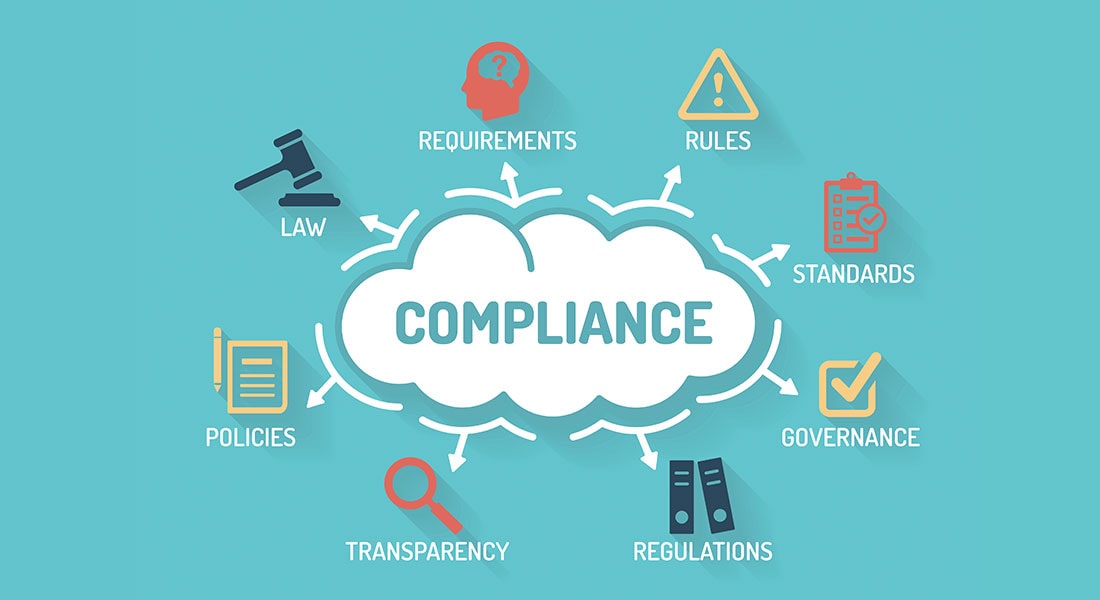How Experiential Learning Helps Make Compliance Training Effective?

Traditional compliance training often falls short in engaging learners and driving behavior change. Experiential learning offers a more effective approach by immersing learners in real-world scenarios and fostering practical application.
By adopting experiential learning, organizations can:
- Enhance learner engagement and improve knowledge retention.
- Drive behavior change and create a positive learning experience.
- Reduce compliance risks and improve organizational reputation.
This blog explores the advantages of experiential learning for compliance training and provides actionable strategies to integrate it into your organization's programs.
→ Download eBook: Scenario-Based Learning - Mastering Real-World Problem Solving
Table of Contents
- What is Experiential Learning?
- What are the Key Strategies for Integrating Experiential Learning into Compliance Training?
- How to Use Digital Tools to Enhance Experiential Learning?
What is compliance training and why is it important?
Compliance training equips employees with the knowledge of laws, regulations, and internal policies relevant to their roles. It ensures adherence to legal and ethical standards, which helps businesses avoid violations, fines, and reputational damage. Proper compliance training fosters a culture of accountability and helps employees make informed decisions, protecting both the organization and its staff from potential risks. In industries where regulatory oversight is stringent, such as healthcare or finance, effective compliance training is essential to maintain operational integrity and customer trust.
Challenges of Traditional Compliance Training
Traditional compliance training methods, such as lectures, manuals, and slide-based presentations, often fall short in engaging employees and driving long-term behavioral change.
Boring and Forgettable: These text-heavy presentations lack the dynamic elements needed to keep employees engaged. The monotonous delivery of content often feels disconnected from day-to-day tasks, making it hard for employees to absorb and retain vital information.
Lack of Engagement: Passive learning methods do little to capture attention. When learners aren’t actively participating, their retention suffers. They become passive recipients rather than active learners, which leads to poor understanding of compliance regulations. This disengagement is especially problematic in compliance training, where clear comprehension and real-world application are critical.
Ineffectiveness in Changing Behavior: Understanding rules on a surface level is insufficient for ensuring compliance. Traditional methods rarely emphasize real-world scenarios, leaving employees without practical skills to navigate compliance challenges. The lack of hands-on application can result in mistakes and unintentional violations, putting the organization at risk. Employees may grasp the basics in theory but struggle when trying to apply that knowledge in a practical setting.
These shortcomings can result in increased risks of non-compliance, leading to legal and financial penalties, and damage to organizational reputation. Employees may also feel frustrated, seeing compliance training as an irrelevant and cumbersome process, which can lower morale.
Organizations must shift to more effective, engaging methods of training—such as experiential learning —that encourage employees to actively apply compliance principles to realistic scenarios. This approach leads to better retention and behavioral change, reducing organizational risk.
What is Experiential Learning?
Experiential learning is a type of learning that focuses on active participation, reflection, and application. It is based on the idea that people learn best by doing, rather than simply passively receiving information.
Here are the two key features of experiential learning:
1. Learning by Doing
2. Focus on Real-World Applications
1. Learning by Doing
Experiential learning involves learners actively engaging in learning activities, rather than passively listening to lectures or reading textbooks. This can include activities such as simulations, role-playing, problem-solving exercises, and hands-on projects.
2. Focus on Real-World Application
Experiential learning is designed to help learners apply their knowledge and skills in real-world situations. This can be done through activities such as case studies, simulations, and internships. By focusing on real-world application, experiential learning can help learners develop the practical skills they need to succeed in their careers.
By learning by doing and focusing on real-world application, learners can:
- Develop practical skills: Experiential learning provides opportunities for learners to develop practical skills that they can apply in their daily lives or careers.
- Increase knowledge retention: When learners actively engage in learning activities, they are more likely to retain the information they learn.
- Enhance problem-solving abilities: Experiential learning can help learners develop critical thinking and problem-solving skills.
- Improve communication skills: Experiential learning often involves working with others, which can help learners develop effective communication skills.
Experiential learning is a valuable tool for helping learners to develop the skills and knowledge they need to succeed in life and career.
How Does Experiential Learning for Compliance Training Benefit Organizations?
Experiential learning offers numerous benefits for compliance training, including:
- Increased knowledge retention: When learners actively engage in compliance training activities, they are more likely to retain the information they learn. This is because they are able to connect the information to real-world scenarios and apply it in a meaningful way.
- Improved skill development: Experiential learning can help learners develop a variety of skills that are essential for compliance, such as problem-solving, critical thinking, and communication. By practicing these skills in a safe and supportive environment, learners can become more confident and effective in applying them in their daily work.
- Enhanced behavior change: Experiential learning can be a powerful tool for changing employee behavior. By providing learners with opportunities to practice compliance-related behaviors in a simulated environment, organizations can help employees develop the habits and attitudes necessary to comply with regulations.
In addition to these benefits, experiential learning can also help organizations to:
- Improve employee engagement: Experiential learning can be more engaging and motivating than traditional compliance training methods. This can help to improve employee morale and reduce turnover.
- Reduce compliance risks: By helping employees to develop the skills and knowledge they need to comply with regulations, experiential learning can help organizations to reduce their risk of non-compliance.
- Enhance organizational reputation: Organizations that invest in effective compliance training programs can improve their reputation with customers, employees, and other stakeholders.

Scenario-Based Learning: Mastering Real-World Problem Solving
Cultivate Critical Thinking and Problem-solving Skills with Scenario-based Learning!
- Types of Scenarios
- When to Use Scenarios and When to Refrain
- Tools and Best Practices for Crafting Scenarios
- And More!
What are the Key Strategies for Integrating Experiential Learning into Compliance Training?
A. Scenario-Based Learning
One of the most effective ways to integrate experiential learning into compliance training is to use scenario-based learning. This involves presenting learners with realistic workplace scenarios that they might encounter in their daily jobs. These scenarios should be designed to test learners' understanding of compliance regulations and their ability to apply them in real-world situations.
Once learners have been presented with a scenario, they should be required to make decisions and solve problems. This will help them to apply their knowledge and skills in a practical way. Learners should also be provided with feedback on their decisions and the potential consequences of their actions.
By using scenario-based learning, organizations can:
- Improve learner engagement: Scenario-based learning is more engaging than traditional compliance training methods, as it allows learners to actively participate in the learning process.
- Enhance problem-solving skills: Organizations can foster critical thinking and problem-solving skills in learners by encouraging them to make decisions and tackle challenges.
- Increase knowledge retention: When learners apply their knowledge in real-world scenarios, they are more likely to retain the information they learn.
- Prepare employees for real-world challenges: Scenario-based learning can help employees to prepare for the challenges they may face in their daily work.
Overall, scenario-based learning is a valuable tool for integrating experiential learning into compliance training programs. By using this approach, organizations can help employees to develop the skills and knowledge they need to comply with regulations and succeed in their careers.
B. Simulations
Simulations are another effective way to integrate experiential learning into compliance training. Simulations create a safe and controlled environment where learners can practice applying their knowledge and skills without the risk of real-world consequences. This can be particularly useful for training employees on complex or high-risk compliance topics.
Additionally, simulations can also be gamified to make them more engaging and motivating for learners. This can involve adding elements such as points, badges, and leaderboards. Gamification can help to increase learner engagement and motivation, which can lead to improved learning outcomes.
By using simulations, organizations can:
- Improve learner engagement: Gamified simulations can be a fun and engaging way for learners to learn about compliance topics.
- Enhance skill development: Simulations can help learners to develop practical skills that they can apply in their daily work.
- Reduce compliance risks: By providing learners with opportunities to practice compliance-related behaviors in a safe environment, simulations can help to reduce the risk of non-compliance.
- Measure learning outcomes: Simulations can be used to assess learner performance and identify areas for improvement.

Overall, simulations are a valuable tool for integrating experiential learning into compliance training programs. By using simulations, organizations can create engaging and effective learning experiences that help employees to develop the skills and knowledge they need to comply with regulations.
eLearning Simulations for Experiential Sales Training- A Success Story
C. Role-Playing
Role-playing is another effective way to integrate experiential learning into compliance training. Role-playing involves learners taking on different roles and acting out scenarios. This can be a valuable tool for helping learners to practice communication and interpersonal skills, which are essential for compliance.
Role-playing can also be used to rehearse difficult conversations. For example, learners can role-play a conversation with a customer who is making a complaint or a colleague who is engaging in unethical behavior. This can help learners to develop the skills they need to handle these situations effectively.
By using role-playing, organizations can:
- Improve communication skills: Role-playing can help learners to develop effective communication skills, such as active listening, clear articulation, and persuasion.
- Enhance interpersonal skills: Role-playing can also help learners to develop interpersonal skills, such as empathy, assertiveness, and negotiation.
- Prepare employees for difficult situations: Role-playing can help employees to prepare for difficult conversations and situations that they may encounter in their daily work.
- Increase confidence: Role-playing can help employees to become more confident in their ability to handle difficult situations.
Overall, role-playing is a valuable tool for integrating experiential learning into compliance training programs. By using role-playing, organizations can help employees to develop the skills they need to comply with regulations and succeed in their careers.

Scenario-Based Learning: Mastering Real-World Problem Solving
Cultivate Critical Thinking and Problem-solving Skills with Scenario-based Learning!
- Types of Scenarios
- When to Use Scenarios and When to Refrain
- Tools and Best Practices for Crafting Scenarios
- And More!
D. Microlearning Activities
Microlearning is a learning approach that involves breaking down complex topics into smaller, more manageable chunks of information. This can be particularly effective for compliance training, as it can help learners to focus on specific topics and avoid feeling overwhelmed.
Microlearning activities can be delivered in a variety of formats, including videos, quizzes, and games. This makes it easy to incorporate microlearning into compliance training programs, regardless of the learners' preferences or learning styles.
By using microlearning, organizations can:
- Improve learner engagement: Microlearning activities are often short and engaging, which can help to capture learners' attention.
- Increase knowledge retention: Microlearning can help learners to retain information more effectively by breaking it down into smaller, more digestible chunks.
- Accommodate different learning styles: Microlearning activities can be delivered in a variety of formats,which makes it easier to accommodate learners with different learning styles.
- Provide just-in-time learning: Microlearning activities can be delivered just-in-time, when learners need the information. This can help to ensure that employees have the knowledge and skills they need to comply with regulations.
Overall, microlearning is a valuable tool for integrating experiential learning into compliance training programs. By using microlearning, organizations can create engaging and effective learning experiences that help employees to develop the skills and knowledge they need to comply with regulations.

E. Interactive eLearning Modules
Interactive eLearning modules are another effective way to integrate experiential learning into compliance training. These modules can use a variety of multimedia elements, such as videos, animations, and interactive quizzes, to create engaging and immersive learning experiences.
Interactive eLearning modules can also include branching scenarios, simulations, and quizzes. Branching scenarios allow learners to make choices and see the consequences of their actions. Simulations can provide learners with opportunities to practice applying their knowledge in a safe and controlled environment. Quizzes can be used to assess learner understanding and provide feedback.
By using interactive eLearning modules, organizations can:
- Improve learner engagement: Interactive eLearning modules can be more engaging than traditional compliance training methods, as they allow learners to actively participate in the learning process.
- Enhance knowledge retention: Interactive eLearning modules can help learners to retain information more effectively by providing opportunities for practice and feedback.
- Provide flexibility and convenience: Interactive eLearning modules can be accessed from anywhere, at any time, making them a convenient option for learners.
- Measure learning outcomes: Interactive eLearning modules can be used to track learner progress and assess their understanding of compliance topics.
Overall, interactive eLearning modules are a valuable tool for integrating experiential learning into compliance training programs. By using interactive eLearning modules, organizations can create engaging and effective learning experiences that help employees to develop the skills and knowledge they need to comply with regulations.
How to Use Digital Tools to Enhance Experiential Learning?
A. Rapid development authoring tools
Rapid development authoring tools are powerful software applications that allow organizations to create interactive and engaging eLearning modules quickly and easily. These tools often include a variety of features, such as drag-and-drop interfaces, templates, and libraries of pre-built content. This makes it possible for even non-technical users to create high-quality eLearning modules.
Rapid development authoring tools can significantly reduce the time and cost of creating eLearning modules. This is because they eliminate the need for custom coding and development. Organizations can simply choose a template, add their content, and customize the module as needed.
Rapid development authoring tools can also be used to create interactive elements such as simulations and quizzes. This can help to make eLearning modules more engaging and effective. For example, simulations can provide learners with opportunities to practice applying their knowledge in a safe and controlled environment. Quizzes can be used to assess learner understanding and provide feedback.
B. Learning Management Systems (LMS)
A Learning Management System (LMS) is a software application that provides a central location for storing,delivering, and managing training materials. LMSs can be used to track learner progress, generate reports,and provide analytics. This can help organizations to measure the effectiveness of their compliance training programs.
LMSs provide a central repository for all of an organization's training materials. This makes it easy for employees to access the training they need, whenever they need it. LMSs can also be used to deliver training materials in a variety of formats, such as online courses, videos, and documents.
LMSs can track learner progress and completion rates. This can help organizations to identify employees who are struggling with the training and provide them with additional support. LMSs can also be used to generate reports on training completion rates and other key metrics.
C. Social learning platforms
Social learning platforms are online communities where learners can connect with each other and share their knowledge and experiences. These platforms can be used to facilitate discussions, Q&A sessions, and peer-to-peer learning.
Social learning platforms can encourage collaboration and knowledge sharing among learners. This can help to create a more engaging and effective learning experience. Learners can also benefit from the insights and perspectives of their peers.
Social learning platforms can be used to facilitate discussions and Q&A sessions. This can help learners to clarify their understanding of compliance topics and get answers to their questions.
D. Additional tools and technologies
In addition to the tools and technologies mentioned above, there are a number of other digital tools that can be used to enhance experiential learning in compliance training. These include:
- Augmented reality (AR) and virtual reality (VR): AR and VR can be used to create immersive and engaging learning experiences. For example, learners could use VR to practice responding to a compliance-related emergency.
- Artificial intelligence (AI) and machine learning: AI and machine learning can be used to personalize compliance training and provide learners with targeted feedback. For example, AI-powered chatbots can provide learners with instant answers to their questions.
- Mobile learning apps: Mobile learning apps can make it easy for learners to access compliance training materials from their smartphones or tablets. This can be particularly useful for employees who are often on the go.
By leveraging these digital tools, organizations can create engaging and effective compliance training programs that help employees to develop the skills and knowledge they need to succeed.
Wrapping Up
Experiential learning is a powerful tool for making compliance training more effective and engaging. By providing learners with opportunities to actively participate in the learning process and apply their knowledge in real-world scenarios, experiential learning can help to:
- Increase knowledge retention: Learners are more likely to retain information when they can apply it in a practical way.
- Improve skill development: Experiential learning can help learners to develop practical skills that are essential for compliance, such as problem-solving, critical thinking, and communication.
- Enhance behavior change: Experiential learning can help to change employee behavior by providing opportunities for practice and feedback.
- Improve employee engagement: Experiential learning can be more engaging and motivating than traditional compliance training methods.
To learn more about how to integrate experiential learning into your compliance training program, we encourage you to download our eBook, "Scenario-Based Learning - Mastering Real-World Problem Solving." This eBook provides practical guidance and best practices for using scenario-based learning to enhance your compliance training.





![Leveraging AR/VR Technology in eLearning [5 Best Ways + Advantages + Disadvantages]](https://blog.commlabindia.com/hubfs/Imported_Blog_Media/Leveraging-ARVR-Technology-in-eLearning-5-Best-Ways-Advantages-Disadvantages.jpg)